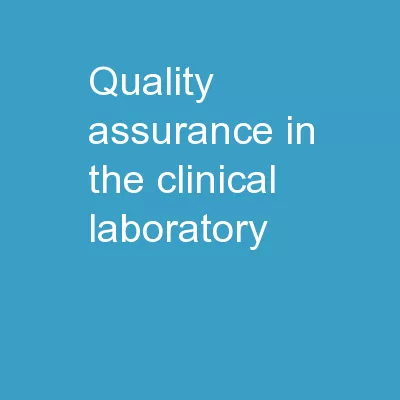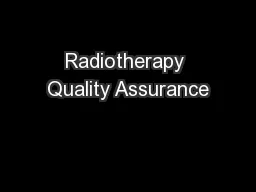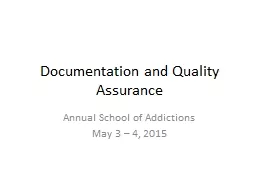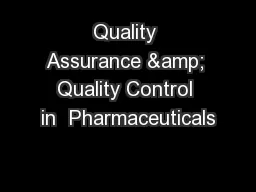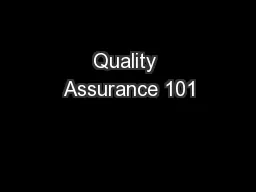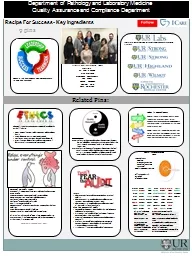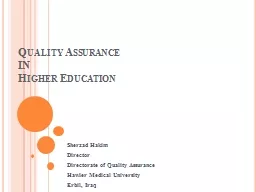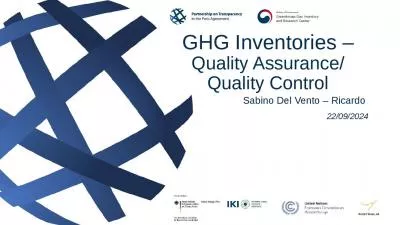PPT-Quality Assurance in the clinical laboratory
Author : sherrill-nordquist | Published Date : 2018-12-06
Why do laboratory errors occur Quality Control amp Assessment Poor Workload Management Understaffed Nonvalidated Tests Inadequate Attention To Detail Time Pressures
Presentation Embed Code
Download Presentation
Download Presentation The PPT/PDF document "Quality Assurance in the clinical labora..." is the property of its rightful owner. Permission is granted to download and print the materials on this website for personal, non-commercial use only, and to display it on your personal computer provided you do not modify the materials and that you retain all copyright notices contained in the materials. By downloading content from our website, you accept the terms of this agreement.
Quality Assurance in the clinical laboratory: Transcript
Download Rules Of Document
"Quality Assurance in the clinical laboratory"The content belongs to its owner. You may download and print it for personal use, without modification, and keep all copyright notices. By downloading, you agree to these terms.
Related Documents

